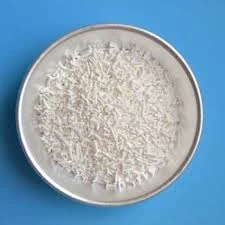
Exploring the Applications and Benefits of Butyl Rubber in Modern Industries
Butyl rubber, a synthetic rubber copolymer, is produced through the polymerization of isobutylene with small amounts of isoprene. Its unique structure gives it properties that distinguish it from other types of rubber, making it an indispensable material in various industries. First synthesized in the 1930s, butyl rubber has since gained widespread use due to its excellent impermeability to gases, outstanding aging stability, and resistance to chemicals.
One of the most significant advantages of butyl rubber is its low gas permeability. This characteristic makes it an ideal choice for applications requiring airtight seals. For instance, it is commonly used in the manufacture of inner tubes for tires, where it effectively minimizes air loss and enhances tire longevity. Additionally, due to its ability to withstand the effects of extreme temperatures, butyl rubber remains stable and functional in both high and low-temperature environments, making it suitable for automotive and aerospace applications.
Moreover, butyl rubber exhibits excellent resistance to chemical substances, which contributes to its popularity in various industrial applications. It is frequently utilized in the manufacturing of seals, gaskets, and coatings that must endure exposure to harsh chemicals, oils, and solvents. This resistive quality allows butyl rubber to maintain its integrity and performance under challenging conditions, providing reliability and durability.
Another impressive characteristic of butyl rubber is its effective damping properties
. Its inherent ability to absorb shock and vibrations makes it a valuable material in the automotive industry, particularly in the production of automotive parts such as engine mounts and suspension systems. This helps enhance vehicle performance and ride comfort by reducing noise and vibration transmitted into the cabin.butyl rubber

Furthermore, butyl rubber is also utilized in the medical field, specifically in the production of medical devices and pharmaceutical packaging. Its biocompatibility and resistance to sterilization methods render it suitable for various applications, ensuring that medical products remain uncontaminated and effective.
In recent years, environmental concerns have prompted increased research into the sustainability of materials used in manufacturing. While butyl rubber is a synthetic material, efforts are being made to develop bio-based alternatives and improve recycling methods to minimize its environmental footprint. Manufacturers are actively exploring ways to enhance the sustainability of butyl rubber production and expand its applications in eco-friendly technologies.
In conclusion, butyl rubber is a versatile and valuable material that plays a crucial role across various industries. Its unique properties, such as low gas permeability, chemical resistance, and effective damping capabilities, make it an essential component in many products. As research progresses towards more sustainable practices, the future of butyl rubber seems promising, ensuring its continued relevance in modern manufacturing and innovative applications.
-
Comprehensive Guide to Acetic Acid as Preservative: Benefits, Uses & Future TrendsNewsNov.24,2025
-
What Is a Food Additive? Global Insights, Applications & Future TrendsNewsNov.24,2025
-
968 Sweetener: The Modern Solution for Health-Conscious SweeteningNewsNov.23,2025
-
Discover the Benefits and Uses of 965 Sweetener (Erythritol) | Tenger ChemicalNewsNov.23,2025
-
961 Sweetener - A Next-Gen Sugar Alternative for Health and IndustryNewsNov.23,2025
-
Understanding 960 Sweetener: The Modern Sugar Alternative for Health and IndustryNewsNov.22,2025
-
Everything You Need to Know About 955 950 Sweeteners – Benefits, Uses, and TrendsNewsNov.22,2025
Hebei Tenger Chemical Technology Co., Ltd. focuses on the chemical industry and is committed to the export service of chemical raw materials.
-

view more DiethanolisopropanolamineIn the ever-growing field of chemical solutions, diethanolisopropanolamine (DEIPA) stands out as a versatile and important compound. Due to its unique chemical structure and properties, DEIPA is of interest to various industries including construction, personal care, and agriculture. -

view more TriisopropanolamineTriisopropanolamine (TIPA) alkanol amine substance, is a kind of alcohol amine compound with amino and alcohol hydroxyl, and because of its molecules contains both amino and hydroxyl. -

view more Tetramethyl Thiuram DisulfideTetramethyl thiuram disulfide, also known as TMTD, is a white to light-yellow powder with a distinct sulfur-like odor. It is soluble in organic solvents such as benzene, acetone, and ethyl acetate, making it highly versatile for use in different formulations. TMTD is known for its excellent vulcanization acceleration properties, which makes it a key ingredient in the production of rubber products. Additionally, it acts as an effective fungicide and bactericide, making it valuable in agricultural applications. Its high purity and stability ensure consistent performance, making it a preferred choice for manufacturers across various industries.





